13 Best Herbal Tinctures For Throat Redness
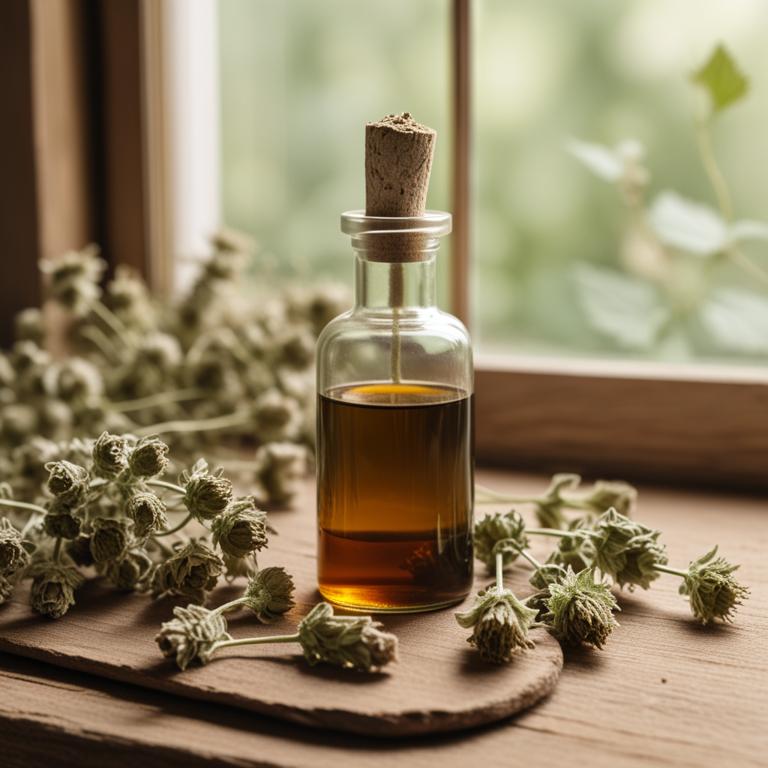
Herbal tinctures for Throat redness are concentrated plant extracts used to treat the discomfort and inflammation associated with a sore throat.
These natural remedies have several benefits, including quick absorption into the body, ease of use, and the ability to target specific symptoms without harsh side effects.
Popular herbal tinctures for treating throat redness include Echinacea, which boosts the immune system and reduces inflammation, Slippery Elm, which soothes and protects the mucous membranes, and Yarrow, which reduces swelling and pain.
Other effective herbal tinctures for throat redness include Sage, Licorice root, Marshmallow root, and Mullein, which all possess anti-inflammatory and antimicrobial properties that help to alleviate the symptoms of a sore throat.
According to "European journal of medical research", tinctures for throat redness using Salvia officinalis fluid extract, specifically a 15% sage spray, have been shown to provide significant symptomatic relief from throat pain intensity within the first two hours after administration and are considered a safe and convenient treatment option for patients with acute pharyngitis.
Below there's a list of the 13 best herbal tinctures for throat redness.
- 1. Echinacea purpurea tinctures
- 2. Ulmus rubra tinctures
- 3. Zingiber officinale tinctures
- 4. Glycyrrhiza glabra tinctures
- 5. Astragalus gummifer tinctures
- 6. Althaea officinalis tinctures
- 7. Salvia officinalis tinctures
- 8. Ginkgo biloba tinctures
- 9. Achillea millefolium tinctures
- 10. Cymbopogon citratus tinctures
- 11. Eucalyptus globulus tinctures
- 12. Thymus vulgaris tinctures
- 13. Olea europaea tinctures
Also you may be interested in...
TODAY'S FREE BOUNDLE
Herb Drying Checklist + Herbal Tea Shopping List + Medicinal Herbs Flashcards
Enter you best email address below to receive this bundle (3 product valued $19.95) for FREE + exclusive access to The Aphotecary Letter.
$19.95 -> $0.00
1. Echinacea purpurea tinctures

Echinacea purpurea tinctures are a popular herbal remedy for treating throat redness and inflammation.
The anti-inflammatory and immunomodulatory properties of this tincture help to reduce the severity of the symptoms and promote healing in the affected area.
The bioactive constituents, including alkylamides and caffeic acid derivatives, work together to inhibit the production of pro-inflammatory compounds and enhance the body's natural defense mechanisms.
By using Echinacea purpurea tinctures, individuals can benefit from a natural and effective treatment for throat redness, with reduced risk of side effects and long-term complications.
Related Study
According to "The Cochrane database of systematic reviews", Echinacea purpurea tinctures for throat redness may be beneficial as some preparations containing Echinacea extracts were found to be better than placebo.
2. Ulmus rubra tinctures
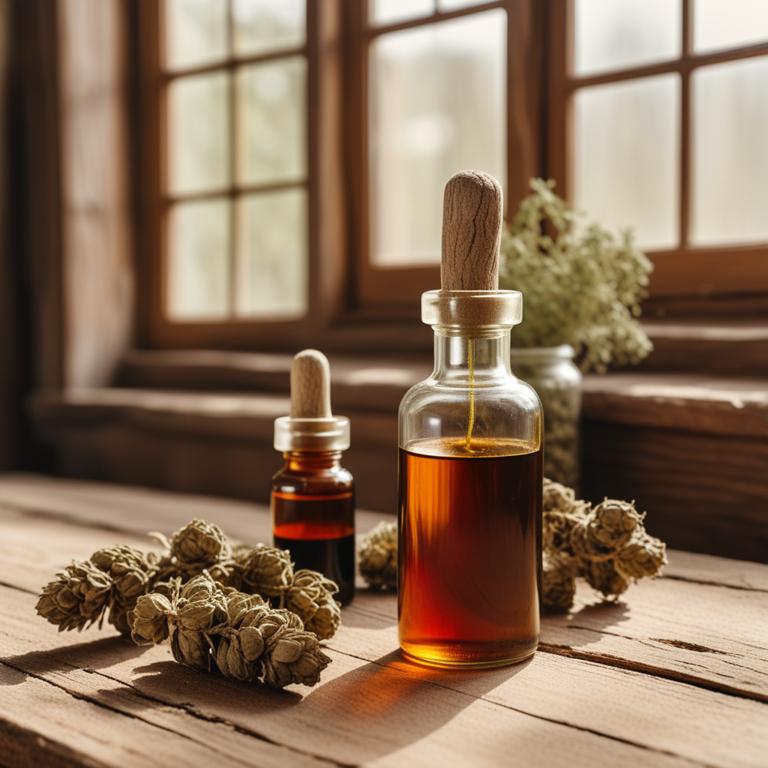
Ulmus rubra tinctures are a herbal preparation derived from the red elm tree, known for its ability to soothe and treat throat redness ailments.
The properties of this tincture, including its anti-inflammatory and antimicrobial properties, help to reduce swelling and combat bacterial infections that cause throat redness.
The bioactive constituents of Ulmus rubra tinctures, such as salicin and other polyphenolic compounds, work to reduce inflammation and promote healing in the throat, making it an effective treatment for this ailment.
Regular use of Ulmus rubra tinctures can provide long-term benefits, including a reduced risk of complications and a faster recovery time, making it a valuable natural remedy for treating throat redness.
3. Zingiber officinale tinctures

Zingiber officinale tinctures are a popular herbal remedy used to treat throat redness due to their anti-inflammatory, antiseptic, and soothing properties.
The bioactive constituents of Zingiber officinale, such as gingerols and shogaols, help to reduce inflammation and alleviate pain, making it an effective treatment for throat redness.
By reducing inflammation and promoting healing, Zingiber officinale tinctures help to treat throat redness by providing quick relief from discomfort and pain.
The benefits of using Zingiber officinale tinctures to treat throat redness include faster recovery, reduced risk of complications, and a natural, non-invasive approach to managing symptoms.
Related Study
According to the study in the Journal of ethnopharmacology, Zingiber officinale tinctures, specifically containing the compound lariciresinol, may be beneficial for throat redness due to its potential efflux pump inhibitory activity, which could enhance the antimicrobial potency of antibiotics and lead to effective killing of drug-resistant bacteria.
4. Glycyrrhiza glabra tinctures

Glycyrrhiza glabra tinctures have been traditionally used to treat throat redness, also known as pharyngitis, due to their anti-inflammatory and soothing properties.
The bioactive constituents of Glycyrrhiza glabra, including glycyrrhizin and flavonoids, help to reduce inflammation and alleviate pain in the throat, making it an effective remedy for this ailment.
The tincture's anti-inflammatory properties help to calm the irritated tissues in the throat, reducing redness and discomfort.
The benefits of using Glycyrrhiza glabra tinctures to treat throat redness include rapid relief from symptoms, reduced risk of complications, and a natural alternative to pharmaceutical treatments.
Related Study
According to the study, Glycyrrhiza glabra tinctures for throat redness may be beneficial due to its pharmacological actions such as inhibiting virus growth and producing anti-inflammatory activity.
5. Astragalus gummifer tinctures

Astragalus gummifer tinctures are a traditional herbal remedy used to treat throat redness, characterized by its anti-inflammatory and antimicrobial properties, which help to soothe and calm irritated tissues in the throat.
This herbal preparation helps to treat throat redness by reducing inflammation, fighting off infections, and promoting healing, making it an effective natural remedy for this condition.
The bioactive constituents of Astragalus gummifer tinctures, including flavonoids, saponins, and phenolic acids, are responsible for its therapeutic effects, as they exhibit antioxidant, anti-inflammatory, and immunomodulatory activities that help to alleviate throat redness.
The benefits of using Astragalus gummifer tinctures to treat throat redness include reduced inflammation, improved wound healing, and enhanced immune function, making it a valuable natural alternative to conventional treatments.
6. Althaea officinalis tinctures
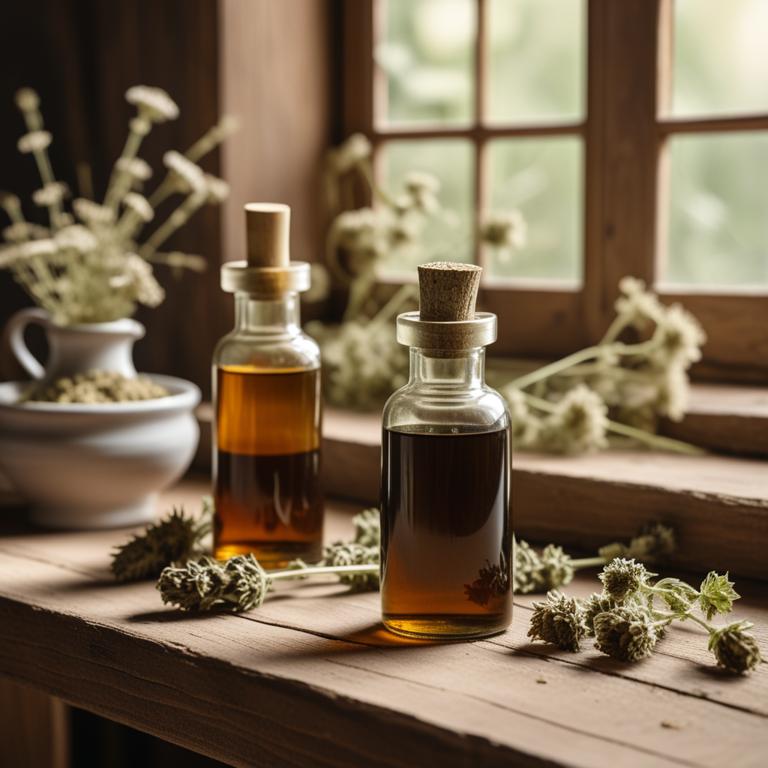
Althaea officinalis tinctures have been traditionally used to treat throat redness and irritation due to their soothing and anti-inflammatory properties.
The mucilages present in the tincture help to form a protective barrier on the mucous membranes, reducing inflammation and discomfort.
Althaea officinalis contains bioactive constituents such as gallic acid and flavonoids, which contribute to its anti-inflammatory and antioxidant effects, helping to alleviate throat redness and promote healing.
Regular use of Althaea officinalis tinctures can provide relief from throat irritation and promote a speedy recovery, making it a popular natural remedy for this common ailment.
Related Study
According to "BioMed research international", Althaea officinalis tinctures for throat redness have shown significant antibacterial activity, with a zone inhibition (ZI) of 16-20 mm and a minimum inhibitory concentration (MIC) of 15.62-31.25 μg/mL against multidrug-resistant Gram-positive and Gram-negative bacteria isolated from sore throat patients.
7. Salvia officinalis tinctures
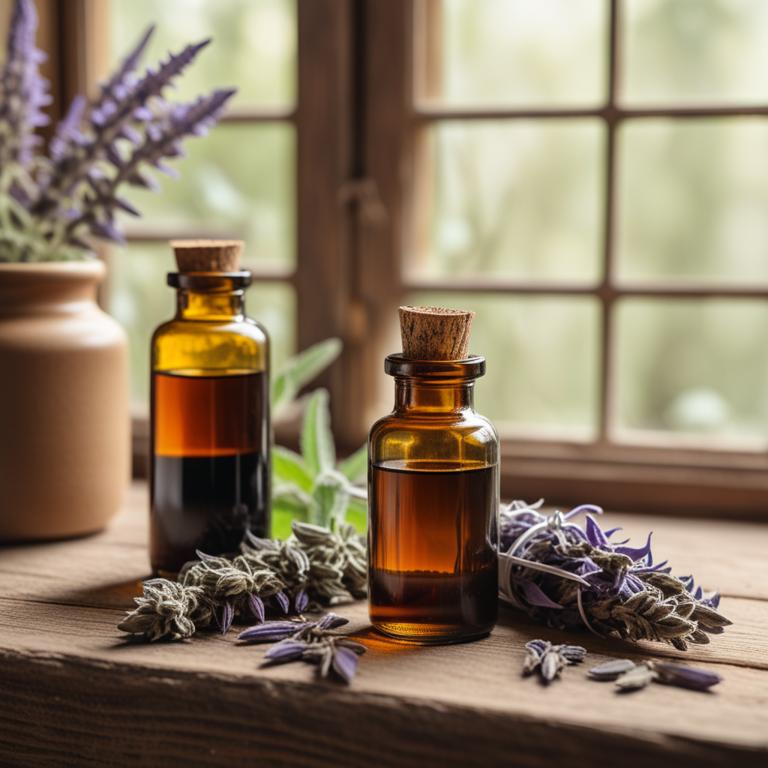
Salvia officinalis tinctures have been traditionally used to treat throat redness and irritation due to their anti-inflammatory and antibacterial properties.
The tincture's ability to soothe and calm the mucous membranes helps to reduce inflammation and alleviate discomfort.
Key bioactive constituents such as rosmarinic acid, caffeic acid, and camphor contribute to its therapeutic effects, inhibiting the growth of microorganisms and reducing inflammation.
Regular use of Salvia officinalis tinctures can help to provide quick relief from throat redness, promoting a speedy recovery and protecting the throat from further irritation.
Related Study
According to "European journal of medical research", Salvia officinalis tinctures for throat redness in the form of a 15% spray were found to be significantly superior to placebo in reducing throat pain intensity, providing symptomatic relief within the first two hours after administration.
8. Ginkgo biloba tinctures

Ginkgo biloba tinctures have been used to treat throat redness due to their anti-inflammatory and antioxidant properties, which help to soothe and calm irritated tissues.
The bioactive constituents of Ginkgo biloba tinctures, including flavonoids and terpenoids, have been shown to reduce inflammation and promote healing in the throat, alleviating redness and discomfort.
By reducing oxidative stress and modulating the immune response, Ginkgo biloba tinctures can help to alleviate throat redness and promote a speedy recovery.
The benefits of using Ginkgo biloba tinctures to treat throat redness include reduced pain and discomfort, improved healing rates, and a reduced risk of complications such as infection.
9. Achillea millefolium tinctures
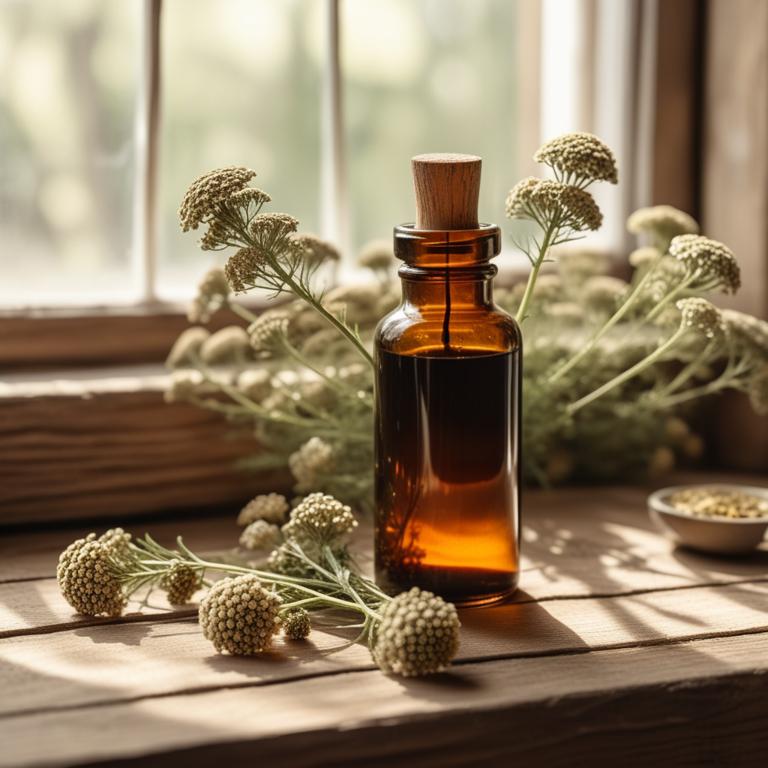
Achillea millefolium tinctures, also known as yarrow tinctures, have been traditionally used to treat throat redness and inflammation due to their anti-inflammatory and antimicrobial properties.
The bioactive constituents of yarrow tinctures, including flavonoids, sesquiterpenes, and triterpenoids, help to reduce swelling and combat bacterial infections that can cause throat redness.
By reducing inflammation and preventing the growth of pathogens, yarrow tinctures can provide quick relief from throat redness and promote a speedy recovery.
The benefits of using yarrow tinctures to treat throat redness include a reduction in discomfort, a decrease in the risk of complications, and a natural alternative to conventional treatments.
10. Cymbopogon citratus tinctures
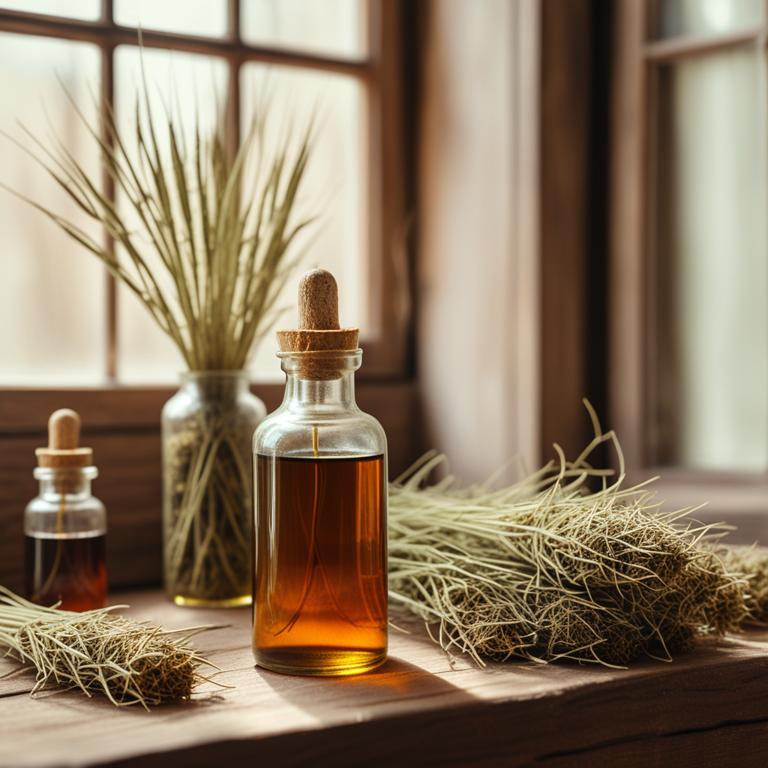
Cymbopogon citratus tinctures, derived from the essential oil of lemongrass, possess antimicrobial, anti-inflammatory, and antioxidant properties that help to treat throat redness.
The bioactive constituents, including citral and geraniol, exert their effects by reducing inflammation and killing bacteria that cause infection, thereby alleviating the discomfort and redness associated with this ailment.
The benefits of using Cymbopogon citratus tinctures to treat throat redness include reduced swelling, eased pain, and a faster recovery time, making it a natural and effective remedy for this condition.
Regular use of Cymbopogon citratus tinctures can also help to prevent future occurrences of throat redness by boosting the immune system and promoting overall respiratory health.
11. Eucalyptus globulus tinctures

Eucalyptus globulus tinctures have been traditionally used to treat throat redness due to their anti-inflammatory and antimicrobial properties, which help to soothe and calm irritated tissues.
The bioactive constituents of Eucalyptus globulus, including eucalyptol and camphor, have been shown to exhibit analgesic and expectorant effects, aiding in the relief of throat redness and discomfort.
The tincture works by reducing inflammation, killing bacteria and viruses, and promoting the removal of mucus, thereby alleviating symptoms of throat redness.
The benefits of using Eucalyptus globulus tinctures to treat throat redness include rapid relief from discomfort, reduced risk of complications, and a non-invasive, natural approach to treatment.
Related Study
According to "Journal of alternative and complementary medicine (New York, N.Y.)", Eucalyptus globulus tinctures, part of the Throat Coat herbal tea, have been shown to significantly reduce the intensity of throat pain when swallowing in patients with acute pharyngitis, providing a rapid and temporary relief of sore throat pain.
12. Thymus vulgaris tinctures
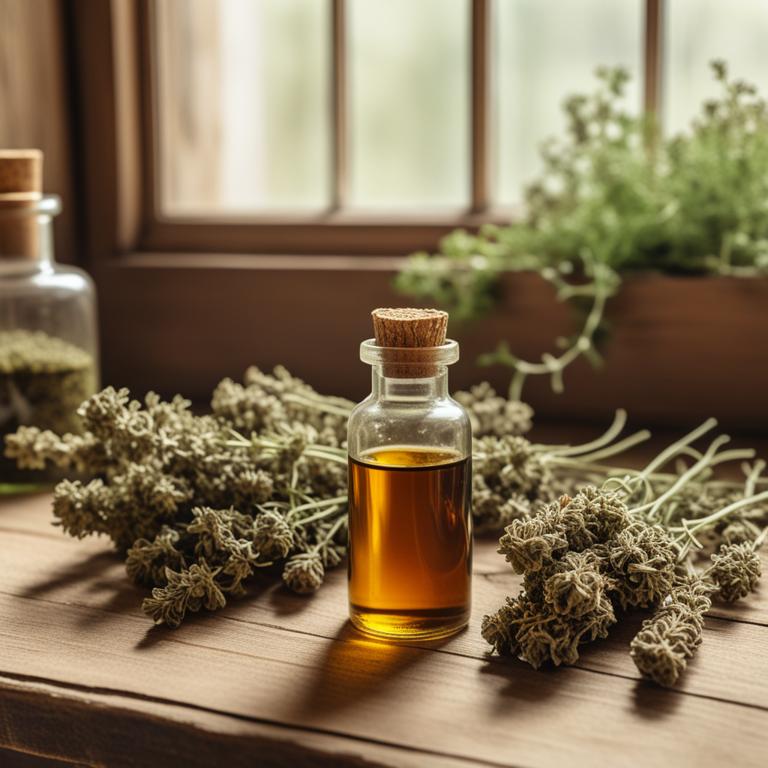
Thymus vulgaris tinctures, derived from the leaves of the thyme plant, have been used to treat throat redness due to their anti-inflammatory and antimicrobial properties.
The bioactive constituents present in thyme, including thymol and carvacrol, exhibit potent antiseptic and antiviral activities that help to soothe and calm irritated throat tissues, thereby reducing redness and discomfort.
Thyme tinctures also possess anti-inflammatory compounds, such as flavonoids and phenolic acids, which help to reduce swelling and pain associated with throat infections.
Regular use of Thymus vulgaris tinctures has been found to provide quick relief from throat redness, promoting a speedy recovery and preventing the spread of infections.
Related Study
According to "Ceska a Slovenska farmacie : casopis Ceske farmaceuticke spolecnosti a Slovenske farmaceuticke spolecnosti", Thymus vulgaris tinctures can be used for throat redness as part of a treatment that includes medicinal plants with antibacterial and antiseptic effects.
13. Olea europaea tinctures
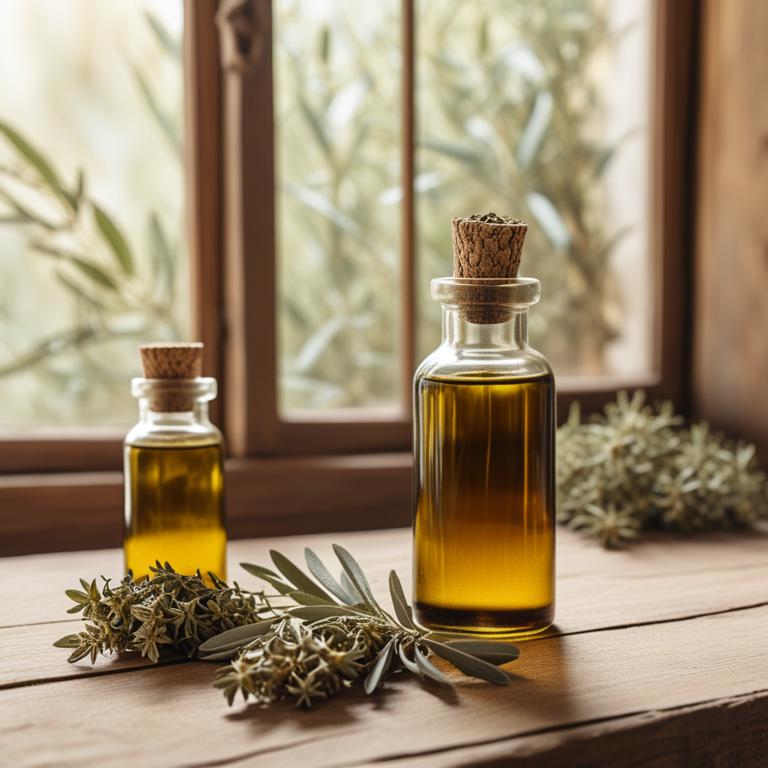
Olea europaea tinctures, derived from the leaves of the olive tree, have been traditionally used to treat throat redness due to its anti-inflammatory and antimicrobial properties.
The bioactive constituents, including oleuropein and hydroxytyrosol, possess antioxidant and anti-inflammatory effects, which help to soothe and calm the irritated throat tissue.
By reducing inflammation and preventing bacterial growth, Olea europaea tinctures help to alleviate symptoms of throat redness, such as discomfort, pain, and difficulty swallowing.
The benefits of using Olea europaea tinctures to treat throat redness include rapid relief from symptoms, reduced risk of complications, and a natural, non-invasive approach to maintaining throat health.